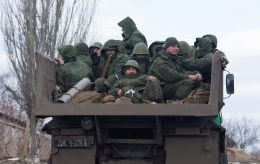G7 countries discuss several options for transferring frozen Russian assets to Ukraine
 US Secretary of the Treasury Janet Yellen (photo: Getty Images)
US Secretary of the Treasury Janet Yellen (photo: Getty Images)
The US, along with other G7 countries, is exploring several options for transferring frozen Russian assets to Ukraine simultaneously, states US Treasury Secretary Janet Yellen.
"I do fear that Russia is beginning to see signs that the US and our allies are tiring, or finding it more difficult to find ways to support Ukraine, and that gives them hope that they can outlast us and wait for our resolve to crumble," said US Treasury Secretary Janet Yellen.
Yellen also noted that several possible options are being discussed, from full confiscation of assets to using them as collateral, stating that Washington strongly supports the recent steps taken by the European Union to separate interest income from frozen asset bodies.
A senior official from the US Treasury said that no option has been ruled out, but noted that Ukraine will also not have the opportunity to receive the full amount at once.
According to Yellen, one of the most promising proposals is for G7 countries to transfer a percentage of the income from frozen Russian assets to Ukraine for use as collateral for loans or bonds issued to help Ukraine.
Yellen also said that Western officials are assessing the risks associated with any such move, including Russian threats of retaliation, but expressed confidence that their impact can be mitigated.
Transfer of frozen Russian assets to Ukraine
Recently, the G7 countries have been divided on what to do with frozen Russian assets. At the end of 2023, several sources reported that the US proposed that G7 countries confiscate $300 billion in frozen Russian assets for the benefit of Ukraine. The initiative was intended to be agreed upon by February 24, 2024.
Later, EU ambassadors reached an agreement on using the profits from frozen Russian assets. It was also reported that representatives of the EU and the US allowed the transfer of income from Russian assets to a separate account.
Additionally, on April 12, the US proposed to provide Ukraine with tens of billions of euros as a loan, which would be secured by future income from Russian state assets frozen by Western countries.

